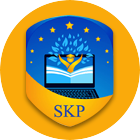+91 - 9443222833/ +91-4175-252633
The Forms of Educational Resources in the Year 999
The year in 999 marks a critical period in human history, characterized by profound social, political, and cultural changes. As the world transitioned from the early medieval to what would later be recognized as the High Middle Ages, educational resources began to take distinct forms that reflected the needs of society at the time. These resources encompassed various mediums, including oral traditions, manuscripts, religious texts, and burgeoning educational institutions. Understanding these forms sheds light on how knowledge was preserved, transmitted, and cultivated during this pivotal moment.
Oral Traditions as Primary Educational Resources
Oral traditions served as the cornerstone of education in the year 999, particularly among non-literate societies. Knowledge was passed down through generations via storytelling, songs, and rituals, which were integral to maintaining cultural identity and community cohesion.

Storytelling as an Educational Tool
Storytelling was not merely entertainment; it played a vital role in imparting moral lessons, historical narratives, and practical knowledge. Elders and community leaders often occupied the role of educators, using tales to convey important societal norms and values.
The narratives often included legendary figures, folklore, and myths that encapsulated the community’s beliefs and customs. Through these stories, younger generations learned about their ancestors’ struggles, successes, and the lessons derived from those experiences. This method promoted engagement and reflection, allowing listeners to draw personal connections to the tales being told.
Moreover, storytelling sessions often took place during communal gatherings, enhancing the collective experience. Such events fostered a sense of belonging and identity within the community while ensuring that knowledge was shared and preserved across generations.
Songs and Music as Educational Mediums
In addition to storytelling, music played a crucial part in education. Songs composed for various occasions—ceremonies, harvests, or rites of passage—served more than a celebratory purpose; they were mnemonic devices that helped preserve historical information and cultural practices.
Musicians often used repetitive structures and memorable melodies, making it easier for audiences to recall complex ideas and histories. The rhythmic patterns and rhymes facilitated memorization, enabling individuals to retain vast amounts of information without written aids.
Furthermore, music often served as a means of unifying communities, enhancing the social fabric while reinforcing shared beliefs and values. As such, songs became powerful educational tools that bridged gaps between generations.
Rituals as Learning Experiences
Rituals also contributed significantly to the dissemination of knowledge. They provided structured opportunities for teaching and learning through participation and observation. Many rituals highlighted essential life stages, such as birth, marriage, and death, imparting both practical knowledge and spiritual understanding.
For instance, rites of passage often included teachings on responsibilities and expectations associated with adulthood. Within these ceremonies, participants learned about communal roles and obligations, reinforcing the importance of interdependence and cooperation within society.
In summary, oral traditions encapsulated a robust educational system in the year 999. Through storytelling, music, and rituals, communities cultivated knowledge, reinforced cultural identities, and ensured the transmission of essential values across generations.
See more: in 999 login
Manuscripts and Written Texts: A Shift in Educational Resources
As the year 999 progressed, the need for formalized education led to the emergence of written texts and manuscripts. This transformation marked a significant shift in the way knowledge was recorded and disseminated.

The Role of Monasteries in Education
Monasteries functioned as centers of learning during this period, preserving and reproducing texts that were crucial for intellectual growth. Monks played a vital role in copying manuscripts, translating works from antiquity, and establishing libraries that housed valuable knowledge.
The transcribing process itself was an educational endeavor. Monks engaged in meticulous work, not only preserving texts but also honing their skills in reading, writing, and interpreting complex ideas. This practice laid the groundwork for the cultivation of literacy within religious contexts and beyond.
Additionally, monasteries offered rudimentary education to select individuals. Some monks dedicated their lives to teaching, providing instruction in Latin, theology, and philosophy to those who sought deeper understanding. While access to such education was limited, it represented a turning point in the evolution of formal schooling.
The Influence of Religious Texts
Religious texts, particularly the Bible and other sacred scriptures, emerged as paramount educational resources. They provided ethical guidelines, theological insights, and historical accounts that shaped individual and communal beliefs.
These texts were often studied within monastic settings, where scholars interpreted and debated their contents. The resultant commentaries and theological treatises became essential resources for furthering intellectual discourse. Although primarily focused on religious education, these writings often touched upon broader themes relevant to governance, justice, and morality.
Moreover, the distribution of religious texts fostered a sense of unity among Christians across Europe. Translations and adaptations made sacred knowledge accessible to non-Latin speakers, helping to cultivate a shared cultural and spiritual identity.
The Development of Scriptoria
Scriptoria, specialized rooms within monasteries dedicated to the production of manuscripts, became instrumental in elevating the status of written texts. Their existence accelerated the reproduction of educational materials, leading to greater availability of knowledge.
Within these spaces, scribes employed intricate methods to create illuminated manuscripts, combining artistry with textual clarity. The lavish illustrations enhanced the reader’s experience, making the acquisition of knowledge visually appealing and intellectually rewarding.
The proliferation of manuscripts ultimately fostered a culture of inquiry and scholarship, encouraging individuals to engage with texts critically. This newfound accessibility to written knowledge laid the foundation for future educational developments, signaling a move towards a more literate society.
The Rise of Early Educational Institutions
The year 999 witnessed the gradual establishment of early educational institutions that would evolve into universities in subsequent centuries. As the demand for structured learning increased, these institutions played a pivotal role in shaping educational landscapes.
Cathedral Schools: Birthplaces of Scholarly Pursuit
Cathedral schools emerged as precursors to universities, offering education rooted in religious and classical teachings. Organized under the auspices of bishops, these schools attracted students from diverse backgrounds seeking knowledge and vocational training.
Curricula often included subjects such as grammar, rhetoric, dialectic, arithmetic, geometry, music, and astronomy—collectively known as the liberal arts. The emphasis on these disciplines aimed to produce well-rounded individuals equipped for service in the church and society.
The educational experience was marked by the Socratic method, encouraging debate and discussion among students. This interactive approach fostered critical thinking and the retention of knowledge, preparing students for greater challenges ahead.
The Role of Guilds in Technical Education
Alongside cathedral schools, guilds emerged as another form of educational institution, particularly for those pursuing vocational training. These associations were formed by craftsmen and tradespeople who sought to ensure quality standards and preserve specialized knowledge within their respective fields.
Apprenticeships became a hallmark of guild-based education, where novices learned practical skills directly from masters. This hands-on approach to learning empowered individuals to contribute to their communities effectively while maintaining high craftsmanship standards.
Moreover, guilds established networks that facilitated the exchange of knowledge and techniques, allowing for innovation and improvement within trades. Thus, they became key players in ensuring the continuity of skilled labor while adapting to evolving societal needs.
The Influence of Arabic Scholarship
During this time, Arabic scholarship profoundly influenced European education. The translation movement, which brought Arabic texts into Latin, introduced classical knowledge in mathematics, astronomy, medicine, and philosophy.
Scholars across Europe began to engage with these translated works, expanding their understanding of the universe and challenging existing doctrines. This cross-pollination of ideas set the stage for the intellectual revival that would define the later Middle Ages.
The influence of Arabic scholarship reinforced the importance of empirical observation and experimentation, prompting scholars to question established beliefs. As the thirst for knowledge grew, so did interest in creating more accessible educational pathways, paving the way for future academic advancements.
The Intersection of Education and Society in the Year 999
The forms of educational resources prevalent in the year 999 were deeply intertwined with the socio-political context of the time. Education functioned not only as a means of knowledge transmission but also as a tool for social cohesion and stability.
Education as a Means of Social Mobility
Education, albeit limited to certain demographics, provided a vehicle for social mobility. Individuals who acquired knowledge through monasteries or cathedral schools often gained positions of influence within the church and government sectors.
The ability to read and write conferred prestige and authority, allowing educated individuals to navigate the complexities of feudal society. As such, education became a pathway to upward mobility for those who could access it, although this largely favored the privileged classes.
However, among peasants and lower classes, educational resources remained scant. The predominance of oral traditions persisted, highlighting the stark divide between literate and non-literate populations.
The Impact of Political Structures on Education
Political structures significantly influenced the shape of educational resources. Monarchs and local lords recognized the importance of fostering educated clergy and administrators to govern effectively. Consequently, support for cathedral schools and other educational endeavors grew in tandem with political ambitions.
Educational resources became intertwined with the exercise of power. Rulers often funded monasteries, recognizing their dual role as centers of learning and religious authority—this relationship solidified the connection between education and governance.
Furthermore, educational institutions were sometimes leveraged as instruments of political propaganda. The teachings within these establishments often aligned with prevailing regimes, promoting ideologies that served the interests of the ruling elite.
Cultural Exchange and Knowledge Transmission
The year 999 was characterized by cultural exchanges resulting from trade routes and conquests. These interactions facilitated the transmission of knowledge across borders, enriching local educational resources with external influences.
The revitalization of trade routes connected Europe with the Islamic world, introducing new philosophies, scientific discoveries, and literary works. As merchants and travelers shared their experiences, ideas permeated societies, boosting intellectual curiosity and exchange.
This growing interconnectedness underscored the importance of education as a means of cultural preservation, adaptation, and enrichment. In turn, the preservation of knowledge across cultures contributed to the development of a more nuanced worldview.
FAQs
What types of educational resources were used in the year 999?
The primary educational resources included oral traditions, manuscripts, religious texts, and emerging educational institutions such as cathedral schools and guilds.
How did monasteries contribute to education during this period?
Monasteries preserved texts, copied manuscripts, and offered education to select individuals. They also played a crucial role in fostering literacy and scholarly pursuits.
Were there any formal schools in the year 999?
Yes, cathedral schools emerged as early educational institutions, focusing on religious and liberal arts education to train clergy and educated laypersons.
How did Arabic scholarship influence European education in 999?
Arabic scholarship introduced classical knowledge in various disciplines, such as mathematics and philosophy, which greatly enriched the intellectual landscape of Europe.
Did everyone have access to education in the year 999?
No, access to education was largely limited to the privileged classes, with lower classes primarily relying on oral traditions for knowledge transmission.
Conclusion
The forms of educational resources in the year 999 illustrate the complex interplay between culture, religion, and societal needs. Oral traditions laid the groundwork for knowledge transfer, while the rise of written texts marked a transformative shift in education. Early educational institutions began to emerge, reflecting the growing demand for structured learning. The intersection of education and society reveals how knowledge was both a tool for empowerment and a mechanism for maintaining social order. As we reflect on this historical context, it becomes evident that the foundations of education established during this time continue to resonate in today’s educational systems, reminding us of the enduring value of knowledge across generations.







 SKP Vanitha international School,
SKP Vanitha international School,